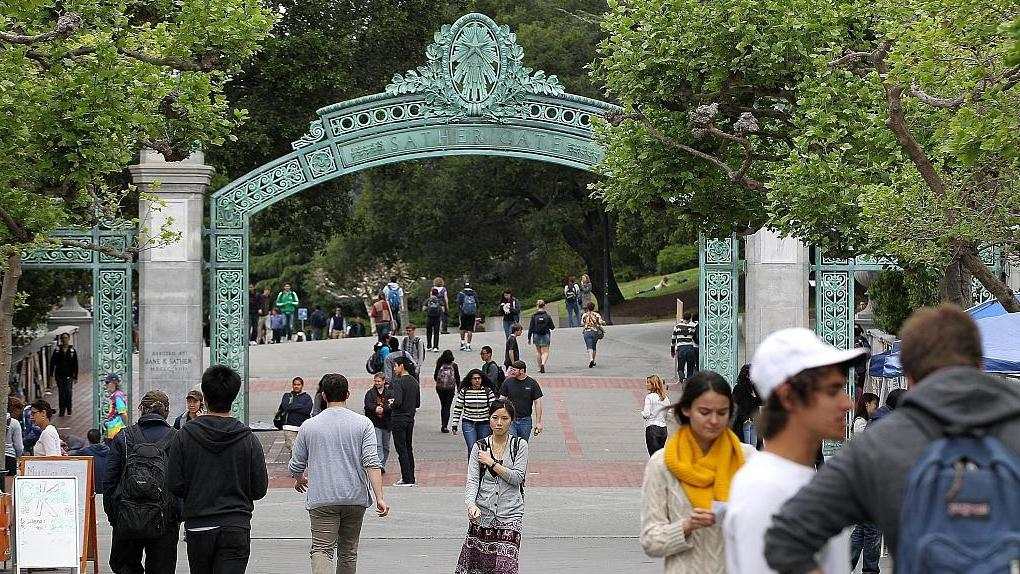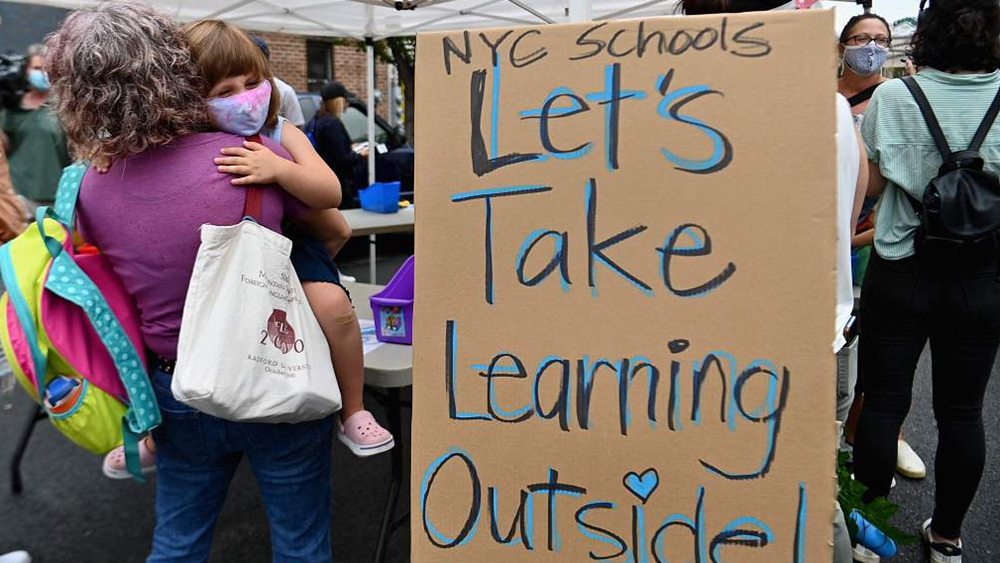
The University of California's Berkeley campus. /VCG
The University of California's Berkeley campus. /VCG
Editor's note: Bradley Blankenship is a Prague-based American journalist, political analyst and freelance reporter. The article reflects the author's opinions and not necessarily the views of CGTN.
Enrollment at U.S. colleges and universities is on pace to drop by about 500,000 undergraduates this autumn, compounding an already dire situation for the country's future workforce that began with the COVID-19 pandemic, according to data published Tuesday by the National Student Clearinghouse Research Center.
These numbers were gathered from a preliminary data set of about 8.4 million undergraduate and graduate students from roughly half of U.S. colleges. They show so far that there are 240,000 fewer undergraduates enrolled this autumn compared to last year, meaning that if the trend holds then about half a million less undergraduates are enrolled nationwide.
All told, this figure would be a decline of 3.2 percent that follows a drop last year of 3.4 percent. This would mean that the first two autumns of the pandemic have brought undergraduate enrollment down in the country by more than 6 percent, the highest two-year decrease in at least half a century.
These figures, however, suggest that it's not just the ongoing COVID-19 pandemic that is keeping people from education but deep – and ever-worsening – structural issues in the American society.
First of all, undergraduate and graduate enrollment has already been declining since about 2012 and there are a number of factors to explain this.
The first reason is the fact that the U.S. was coming out of a huge recession. When the economy improves, people tend to leave college and enter the job market, with the reverse happening during recessions. (The fact that the COVID-19 pandemic and the resulting recession has not fueled college enrollment is worrying for this reason).
The second reason is the demographics, urbanization and the fact that the number of high school graduates is pretty much the same, or declining in some instances, thanks to a plateauing population growth rate.
Finally, perhaps the most important factor is the fact that higher education is becoming increasingly unattainable for the working class. States are investing less money into education, meaning that students have to fork over higher and higher tuition every year.

Teachers, students and parents participate in an outdoor learning demonstration for New York City schools in front of the Patrick F. Daly public school in the Brooklyn borough of New York City, the U.S., September 2, 2020. /CFP
Teachers, students and parents participate in an outdoor learning demonstration for New York City schools in front of the Patrick F. Daly public school in the Brooklyn borough of New York City, the U.S., September 2, 2020. /CFP
In fact, preliminary data from this year, as was also the case with the data from last year, shows that the greatest decline in enrollment is at the community college level, which mainly services low-income and academically weaker students. In total, enrollment at community colleges this year declined by 6.1 percent, meaning that the class of 2021 has about one-fifth less students than the class of 2019.
Some analysts have suggested that students were simply taking a gap-year while the pandemic raged, but the data also shows that this was only true for elite private four-year schools, such as Harvard, Princeton and Stanford universities. Enrollment at these institutions actually slightly grew since the beginning of the pandemic, suggesting that education inequity will deepen in the future to the benefit of wealthier students and at the expense of poorer ones.
This is because, as mentioned before, states continue to slash education spending and many have adopted a so-called "outcomes-based funding" model that essentially rewards schools that produce the most degrees while punishing those that don't. While it sounds good in principle, the result in reality is states not allocating needed resources to "at-risk" students that have less resources to finish their programs, namely low-income students and students of color.
Declining enrollment at public universities and colleges, especially regional campuses and community colleges, ultimately means that the fate of these institutions will be put in jeopardy. This could leave countless more people without fundamental access to education and will have serious ramifications for the U.S. economy and its ability to stay competitive.
These domestic figures are coupled with the fact that recent U.S. policies against immigrants and foreign students are making talent pools abroad untenable, and also costing American universities billions of dollars in lost tuition fees.
In fact, National Security Advisor Jake Sullivan was asked about these enrollment figures the same day they came out. Framed under the pretext of competition with China, Sullivan quoted First Lady Dr. Jill Biden as saying that "any country that out-educates the United States will outcompete the United States, and that is a fundamental national security issue."
This might actually be somewhat of a positive signal from the Joe Biden administration since the U.S. government is pretty much only capable of making investments that benefit its people if it's a byproduct of national security concerns. (For example, this is why the sprawling Interstate Highway System was built).
But the reality is that no one actually out-educates the United States so much as the United States deliberately under-educates itself. From this perspective, Washington is its own "fundamental national security issue" since it has no one to blame but itself for failing to properly invest in students.
(If you want to contribute and have specific expertise, please contact us at opinions@cgtn.com.)

